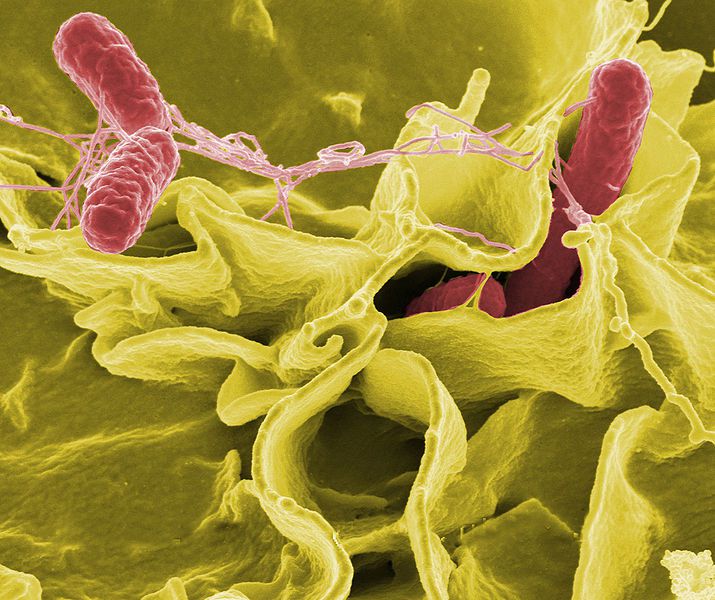-
 Abattage (bird care)
Abattage (bird care)
-
 American Bullfrog
American Bullfrog
-
 M20
M20
-
 Isoleucine
Isoleucine
-
 Semi-major axis
Semi-major axis
-
 Esker
Esker
-
 Nuclear reaction
Nuclear reaction
-
 Avogadro
Avogadro
-
 Augmented reality
Augmented reality
-
 UTC
UTC
-
 Equation
Equation
-
 Lithium-ion battery
Lithium-ion battery
-
 COP
COP
-
 Outcrop
Outcrop
-
 Hind-claw
Hind-claw
-
 Meridian of a celestial body
Meridian of a celestial body
-
 Mitochondrion
Mitochondrion
-
 Carbonate rock
Carbonate rock
-
 Terpenoid
Terpenoid
-
 Triangle galaxy
Triangle galaxy
-
 VoIP
VoIP
-
 Apothecary
Apothecary
-
 Kelvin
Kelvin
-
 Plutoid
Plutoid
-
 Local zoning plan
Local zoning plan
-
 CSMA/CD
CSMA/CD
-
 Migmatite
Migmatite
-
 Corpuscle
Corpuscle
-
 Nosocomial
Nosocomial
-
 Polylactic acid
Polylactic acid
Salmonella
The Salmonellae belong to the Enterobacteriaciae genus Salmonella. They cause two types of illnesses: gastroenteritis from food poisoning (salmonellosis), and typhoid and paratyphoid fevers.
Features of salmonellae
They are Gram negative bacilli which are mobile in all directions because of their flagelli. They are facultative aerobic-anaerobic.
They have a genome composed of a chromosome with almost 5 million base pairs coding for approximately 4,500 proteins.
Salmonella, salmonellosis and typhoid/paratyphoid fever
It is now known that there are more than 2,000 species of Salmonellae, although only a minority is responsible for the majority of human salmonelloses. The serotypes Typhimurium and Enteritidis are involved in gastroenteritis whereas the serotypes Typhi and Paratyphi are involved in the febrile diseases.
The first group are limited to the gastrointestinal system whereas the second can cross the intestinal barrier, colonising lymphoid tissue. Their pathogenicity is due to endotoxins produced by the salmonellae.
 Salmonella is a pathogenic bacterium responsible for salmonellosis and typhoid fever. © DR
Salmonella is a pathogenic bacterium responsible for salmonellosis and typhoid fever. © DR
Latest
Fill out my online form.



